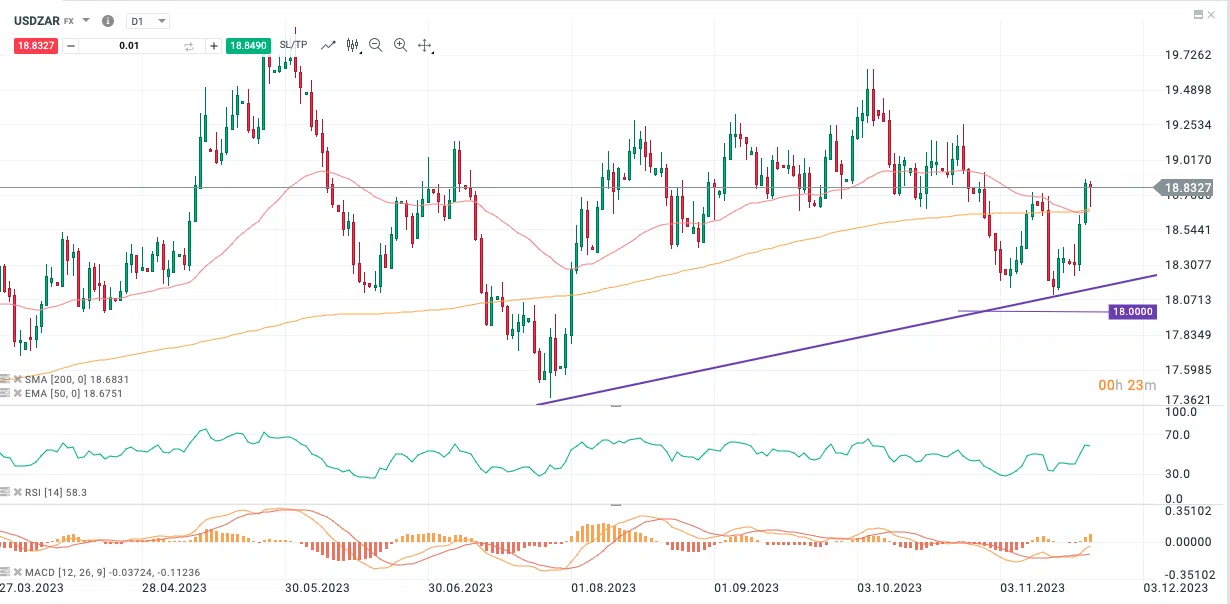-
Best Forex Brokers
Our top-rated Forex brokers
-
Brokers for Beginners
Start trading here
-
Forex Demo Accounts
Learn to trade with no risk
-
ZAR Trading Accounts
Save on conversion fees
-
Lowest Spread Brokers
Raw spreads & low commissions
-
ECN Brokers
Trade with Direct Market Access
-
No-deposit Bonuses
Live trading with no deposit
-
High Leverage Brokers
Extend your buying power
-
Islamic Account Brokers
Best accounts for Muslim traders
-
Market Maker Brokers
Fixed spreads & instant execution
-
All Trading Platforms
Find a platform that works for you
-
TradingView Brokers
The top TradingView brokers
-
MetaTrader4 Brokers
The top MT4 brokers in SA
-
MetaTrader5 Brokers
The top MT5 brokers in SA
-
cTrader Brokers
The top cTrader brokers in SA
-
Forex Trading Apps
Trade on the go from your phone
-
Copy Trading Brokers
Copy professional traders
On Thursday, 23rd November, the South African Reserve Bank decided to hold interest rates for the third time in a row at 8.25%.
While markets had priced in a less than 10% chance of an increase, the surprise uptick in inflation for October – up to 5.9% from 5.4% in September – did make the decision slightly more difficult. But with oil prices falling and the Rand having gained against the dollar since September, most analysts believe the acceleration in inflation only to be temporary.
Minutes from the latest meeting of the US Federal Reserve’s FOMC showed that monetary policy in the USA will likely remain unchanged for the foreseeable future – leading to a weaker USD in the longer term. South Africa’s dollar-denominated exports, such as gold and other precious metals, will be boosted by a weaker dollar – supporting the Rand in the short term. The long-awaited economic recovery in China would certainly help matters further.
But the longer-term outlook is uncertain. In his medium-term budget policy statement on November 1st, South African Finance Minister Enoch Godongwana warned that state finances faced a 3 billion USD shortfall. South Africa’s budget deficit is now expected to be close to 5% of GDP versus the 4% previously forecasted by the government. Loadshedding, problems at Transnet, and higher interest rates have all contributed to the gloomy outlook. Government borrowing costs on debt have increased to 9.5%, rising from 8.3% earlier this year, and the cost-of-living crisis continues to weigh heavily on growth.
This means that taxes are likely to increase, and spending cuts are a necessity. With an election just over six months away, the options for the government are narrowing, and the political risk around the USD/ZAR is heightened.
Options being discussed are tapping the government-owned gold and foreign currency account at the South African Reserve Bank, valued at close to 25 billion USD, to lower the debt burden. Some analysts are also concerned that the government may look to curtail the SARB´s independence to exert more control over monetary policy.
While the Rand looks likely to benefit in the short-term, South Africa’s overall economic health has weakened in 2023, and that weakness will likely continue. Any gains by the Rand over the next few weeks will be hard to sustain into 2024.
Technical Analysis

USD/ZAR Daily Chart by XTB, prepared by Alison Heyerdahl
The rand reached a key level on Thursday, 15 November 2023, after having gained strength against the greenback because of South African retail sales data and lower-than-expected PPI and CPI data. Having tested the long-term trendline support of March 2022 (purple), the pair bounced up and passed through an important resistance level, represented by the crossover of the 50-day EMA (pink) and 200-day MA (orange) yesterday. Further upside moves will bring the psychological handle of R19/$ into sharp focus, while moves to the downside past R18.5/USD will see interest develop around trendline support and lower than that at R18/$.
Stay updated
This form has double opt in enabled. You will need to confirm your email address before being added to the list.




























